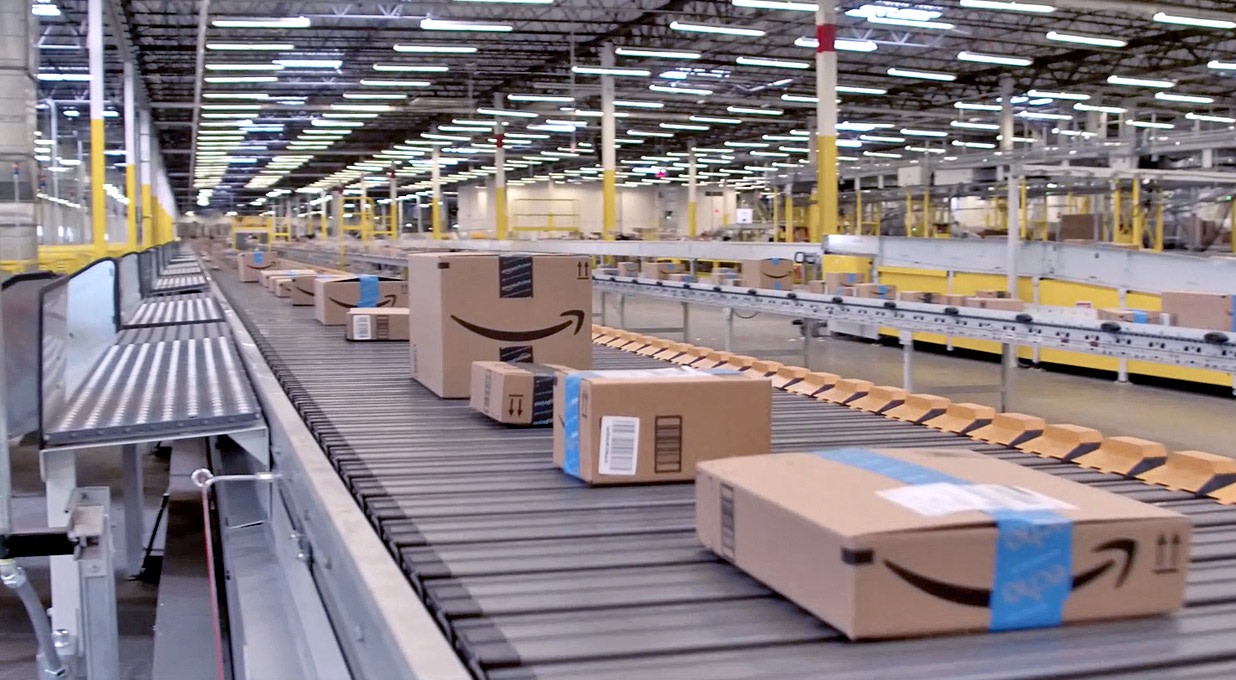Amazon reported an 11% rise in second quarter net revenue, ignoring currency movements, to $148.0bn. Growth was broad based, driven by AWS (up 19% vs 17% expected) and strong growth in advertising. Operating income rose from $7.7bn to $14.7bn as the retail divisions continue to recover profitably.
Free cash flow was $53.0bn on a trailing twelve-month basis, up from $7.9bn this time last year. Including leases, net debt was $43.9bn at the end of period.
Third quarter net revenue is expected to be between $154.0-158.5bn, up 8-11%. Operating income is expected to be between $11.5-15.0bn ($15.4bn had been expected). Capital expenditure is expected to increase over the second half compared to the first (H1 $30.5bn) to support AWS infrastructure.
The shares were down 8.7% in pre-market trading.
Our view
Amazon delivered a decent quarter, though you might not know it from the market’s reaction. Amazon’s cloud business (AWS) did its job, with sales growth accelerating quarter-on-quarter, quelling any fears that the resurgence in growth from the cloud business may be short-lived. But it was the guidance that spooked markets. AI spending is set to ramp up, and the impact on the profit line is making its way into guidance.
The recovery story for the retail business is still providing a major tailwind for annual growth numbers. Margins have been resuscitated following the better revenue and gargantuan cost-saving efforts, including lay-offs. Amazon has a dominant position in the e-commerce market, and its Prime membership ties it all together in a nice bow of recurring revenue.
Longer term, we think the ongoing shift toward e-commerce has room to run. But there are near-term hurdles to overcome. Despite big improvements from last year, margins in this area dipped quarter-on-quarter, and economic data from the US is starting to look sketchy. While we don’t pay too much attention to short-term moves, trends are something to watch for, and we’ll be keeping a close eye on this.
Through AWS, Amazon is also a leader in cloud services. This is arguably Amazon’s most lucrative growth driver and an area to pay close attention to. Companies rely on AWS for core IT infrastructure, and with the new wave of AI demand, computing power is the hottest commodity. Amazon’s Bedrock platform was launched earlier this year and gives access to a range of the best models from the likes of Meta, Mistral and Anthropic, along with tools to help them leverage this new technology.
The downside to all this new demand is the cost to build out enough new infrastructure to actually service it. Investment is set to ramp up over the coming quarters and that is starting to have an impact on profit guidance. Revenue must keep accelerating for all that spend to be worth it.
We're also supportive of growth in services like Prime, and the group's advertising arm. It's been impressive to see the latter making progress. Troves of data footprints and millions of customers ready and willing to click buy are a marketer's dream.
With AWS and areas like advertising, Amazon has growth drivers in place to carry it through the next cycle. With a longer-term time horizon, we think Amazon will be able to expand its leadership position. If weakness is to come, it’ll be from one of two areas - e-commerce, driven by weaker consumer conditions or an AI wave that runs out of steam. Both risks are worth monitoring.
Amazon key facts
All ratios are sourced from Refinitiv, based on previous day’s closing values. Please remember yields are variable and not a reliable indicator of future income. Keep in mind key figures shouldn’t be looked at on their own – it’s important to understand the big picture.
This article is not advice or a recommendation to buy, sell or hold any investment.No view is given on the present or future value or price of any investment, and investors should form their own view on any proposed investment.This article has not been prepared in accordance with legal requirements designed to promote the independence of investment research and is considered a marketing communication.Non - independent research is not subject to FCA rules prohibiting dealing ahead of research, however HL has put controls in place(including dealing restrictions, physical and information barriers) to manage potential conflicts of interest presented by such dealing.Please see our full non - independent research disclosure for more information.


